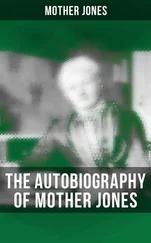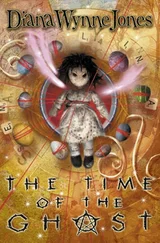A pedigree of European languages shows that nearly all are related. This Indo-Kuropean family also includes Indian languages such as Bengali and extinct tongues like Sanskrit. Its existence was recognised by Sir William Jones in 1786, who saw that Greek, Latin and Sanskrit 'all sprang from some common source which perhaps no longer exists'. Finnish, Hungarian, Turkish and Maltese belong to other linguistic groups, but half the world's population now speaks an Indo-European tongue.
A political map of modern Europe is crossed by many national barriers, most of which mark a shift in language. Most Frenchmen speak French, and most Germans German. Language is a force for national cohesion and a barrier to the movement of people. It reduces the chance of marriage and the spread of genes and has long done so. The Old Testament describes the fate of an Ephraimite prisoner taken by the Gileadites: 'The men of Gilead said unto him. Art thou an Ephraimite? If he said nay, then said they unto him, Say now Shibboleth; and he said Sibol-leth: for he could not frame to pronounce it right. Then they took him and slew him.'
Some borders between languages are regions of biological change. There are genetic differences between Welsh and English speakers in part of Pembrokeshire. This 'Little England beyond Wales' began when in rro8 King Henry I moved a group of artisans to Wales from the banks of the Tweed to set up a weaving industry. Their anglophone home ended at a sharp boundary, the Landsker. Even a century ago, just one marriage in five hundred took place across the divide. Eight hundred years after they arrived, the blood groups of the descendants of the immigrants still differ from those of their Welsh-speaking neighbours.
In the same way, the population of Orkney, whose native language is a Scandinavian one, is distinct from the rest of Scotland. Hven dialects may mark biological barriers. France has a small genetic step between those who speak the langue d'oc (southern French) and speakers of the northern langue d'o'tl. Genes and language tell the same story.
Their concordance is not always absolute. The Balkans have had, and retain, a tumultuous history of movement and conquest which has obscured any relationship hetween linguistic and genetic units. Hungarians, too, speak a distinct language, but remain biologically close to their neighbours. The Magyar conquerors from the east imposed a language on their subjects, but were too few in number to make much impact on the genes. In some places genetic steps exist even within groups who speak the same language. The east of Iceland is somewhat distinct in its genes from the west, although both speak Icelandic. This may be a relic of the history of settlement of western Iceland by Scandinavian immigrants who brought wives and servants from Ireland.
The language of the Basques, like their genes, seems to be unrelated to any other. The Latin author Mela wroteof his bafflement at the names of peoples and rivers which meant nothing in any tongue known to him. Francis Galton himself, who often went on holiday to the Basque country, recalled 'the legend that Satan himself came here for a visit. Finding after six years that he could neither learn the language nor make the Basques understand his, he left the country in despair. 1Satan's problem is illustrated by a typically impenetrable Basque proverb: 'Oinak zewrbitz-atzen du eskua, eta eskuak oina" ('the foot serves the hand and the hand serves the foot'). Basque may be the last remnant of the speech of Europe before agriculture. Itssole apparent relative is spoken by some of the isolated peoples of what was once Soviet Georgia. Many Georgians believe that their own language was taken to the Basque country by Tubal, grandson of Noah, and moves were onu 1nloot to find a basque to succeed to the throne of Georgia.
Safe in their mountains the Basques resisted invaders, so that their ancient tongue, a language of hunter-gatherers, lives on among its half-million speakers. The skeleton of Cro-Magnon himself was found in a part of France which, its place-names suggest, was once in the Basque country. There might even be a linguistic, and perhaps a genetic, link between Cro-Magnon, one of the first Europeans, and the Basques. This last remnant of a lost European economy is under threat. Today, Basque genes stretch for much further than the language: east to Zara-goza, now a Spanish city, and north into France. Their economy was destroyed long ago. Now their speech and their culture may at last be squeezed out by modern society. Like the Etruscans — who also spoke a non-Indo-European language — only their genes will be left
DNA can say much more about ancestry than can language. The forefathers of today's Britons come from Europe, Africa, India and even China, but they speak English. Books and pictures will in time blur the links between genes and language, but we are still in a phase of history where enough remains of the linguistic past to speculate about the origins of speech and perhaps of modern man himself.
Where did Indo-European languages come from? The first recognisable member of the group was Hittite, written in cuneiform and spoken in Turkey four thousand years ago. Modern Indo-European tongues can sound quite different. 'Our father, who art in heaven' is 'Ein Tad, yr hwn wyt yn y nefoedd" 1in Welsh, 'Patera mas, pou eisai stous ouranous 1 in Greek, 'Otcbe nasb, suscij na in Russian and 'He hamarc svarghast pita' in Hindi.
Nevertheless, some words for widely used objects are held in common. They can be used to guess where the languages originated. Indo-European tongues share several terms for domestic animals and crops. The ancient word for sheep, owis, has been inferred from the Latin ovis, Sanskrit avis and English ewe. Cow was kou, and water yotor. There are similar words for corn, yoke, horse, and wheel, too.
Perhaps the Indo-Europeans were farmers, who brought their language with them as they spread. Quite where their homeland may have been is uncertain. Their language began long before the first record was preserved. They might represent a wave of invasion of Kurgan people from the Pontic steppes, north and east of the Black Sea. This was the land of the Sredny Stog horsemen. Their journeys began about 4500 BC, long after the origin of agriculture. Some believe that the Indo-Europeans invaded much earlier and brought farming with them as they migrated from Asia Minor three thousand years before the Kurgans. Some of the Indo-European peoples — and languages — who built Europe may have begun to diverge before they moved from their homes in the east. It may be hard to trace just who, if anyone, among today's nations and tongues are the ancestors of modern Europeans.
Language, archaeology and genes all bear witness to an invasion of Europe from the east. Farming, genes and speech are intimately related. In some place, farmers moved into an empty — or scarcely populated — land rather than into a successful hunting economy (as it did in Europe). Rice growers of the Far East around the Yangtse basin took their language as well as their DNA with them as they filled the Pacific. At one time these Austronesian languages were the most widespread of all, with a territory that extended from Madagascar to Hawaii and Easter Island. In Africa, farmers moved south, to fill western and southern parts with Bantu speakers.
Today's technical advances, from the book co the internet, provide new ways of speaking to people. They have led to the erosion of the nation-states that have so long shaped history. We can now reach anyone in the world as soon as they can get to a telephone. New work on global patterns of language suggests that the first social breakthrough of all also involved a new form of communication technology.
Читать дальше
Конец ознакомительного отрывка
Купить книгу












